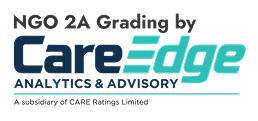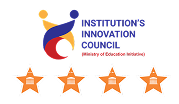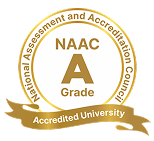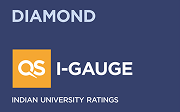Recuritment for Various Position Click here to know more

Recuritment for Various Position Click here to know more

ADMISSION ENQUIRY- 2026
ADMISSION ENQUIRY - 2026
Python Programming
GANPAT UNIVERSITY FACULTY OF ENGINEERING & TECHNOLOGY Programme Bachelor of Technology Branch/Spec. Biomedical Engineering Semester III Version 1.0.0.0 Effective from Academic Year 2023-24 Effective for the batch Admitted in July 2022 Subject code 2BM3103 Subject Name Python Programming Teaching scheme Examination scheme (Marks) (Per week) Lecture(DT) Practical(Lab.) Total CE SEE Total L TU P TW Credit 3 - 1 - 4 Theory 40 60 100 Hours 3 - 2 - 5 Practical 30 20 50 Pre-requisites Basic knowledge of fundamentals of programming. Course Outcomes On successful completion of the course, the students will be able to: CO1 Understand the fundamentals of Python syntax. CO2 Demonstrate proficiency in handling Strings and File Systems. CO3 Create, run and manipulate Python Programs using core data structures like Lists, Dictionaries and use Regular Expressions CO4 Interpret the concepts of Object-Oriented Programming used in Python. CO5 Identify Database Connectivity Concepts and Object Relational Managers in Modules Theory syllabus Unit Content Hrs. 1 INTRODUCTION: Python Concepts, Dynamic vs. Static Types, Procedural vs. Object-Oriented Programming, Comparing Programming Languages: C,C++,JAVA, C#, Python, Python Interpreter, Software development, Installing Python Jupyter notebook 8 2 PROGRAMMING WITH PYTHON: Identifiers, Keywords, statements and expressions, Python Syntax, variables, Operators, Precedence and Associativity, Data types, Indentation, comments, reading input, print output, Dynamic and strongly typed language, Launching Python programs, Python Object Types, Python Numbers, Strings and string operations, Regular expressions, Exception Handling 10 3 DICTIONARIES AND TUPLES: Concept of dictionary and basic operations, Creating Tuples, Basic Tuple Operations, Indexing and Slicing in Tuples, Built-In Functions Used on Tuples, Relation between Tuples and Lists, Relation between Tuples and Dictionaries, Tuple Methods, Set Methods, Traversing of Sets, Sequence unpacking 10 4 FILE HANDLING: Types of Files, File Operations, Files and Streams, Creating a File, Reading From a File, Iterating Through Files, Writing file, Maintain students record using file handling, The Pickle Module, Reading and Writing CSV Files, Python os and os.path Modules 8 5 INTRODUCTION TO DATA SCIENCE: Working With a Databases, Statistical analysis of data, NumPy and Pandas with Python, Graphing with Matplotlib pyplot: Line Graphs, Scatter Graph, Pie Charts, Bar Charts,Figures and Subplot, 3D Graphs Case Study: Bio-Signal Plotting using Matplotlib/Pandas Library. 9 Practical Contents 1. Term work and practical shall be based on the above syllabus. 2. Students should complete a mini project based on the above syllabus. Text Books 1 Learning program to Python by Cody Jackson 2nd edition Reference Books 1 Introduction to Python Programming, Gowrishankar S, Veena A, 1st Edition, CRC Press/Taylor & Francis, 2018. 2 Beginning Python by James Payne, Wrox Publication. 3 Beginning Python by Magnus Lie Hetland, Apress Publication ICT references 1 https://www.tutorialspoint.com/python/ 2 https://wiki.python.org/moin/BeginnersGuide 3 https://www.programiz.com/python-programming 4 https://docs.spyder-ide.org/ Mapping of CO with PO and PSO: PO1 PO2 PO3 PO4 PO5 PO6 PO7 PO8 PO9 PO10 PO11 PO12 PSO1 PS02 PSO3 CO1 3 3 3 3 2 1 0 0 0 0 1 3 0 3 1 CO2 3 3 3 0 1 0 0 0 0 0 1 3 2 2 1 CO3 3 3 3 3 2 1 0 0 1 1 1 3 0 1 0 CO4 3 3 2 2 0 0 0 0 1 0 0 3 3 1 0 CO5 3 3 3 2 1 2 0 0 1 1 1 3 1 1






